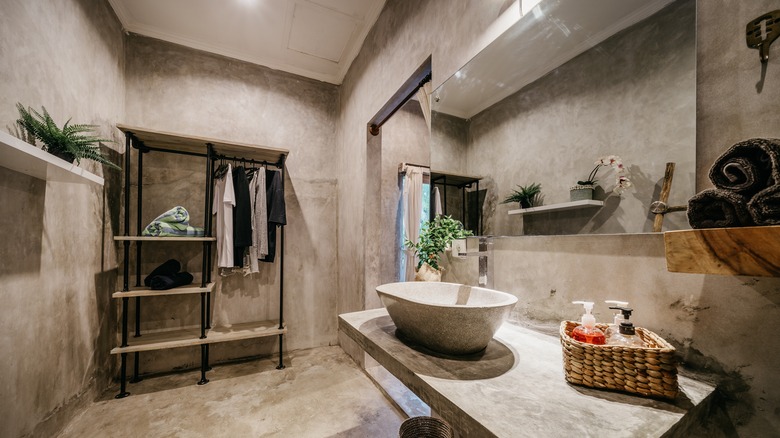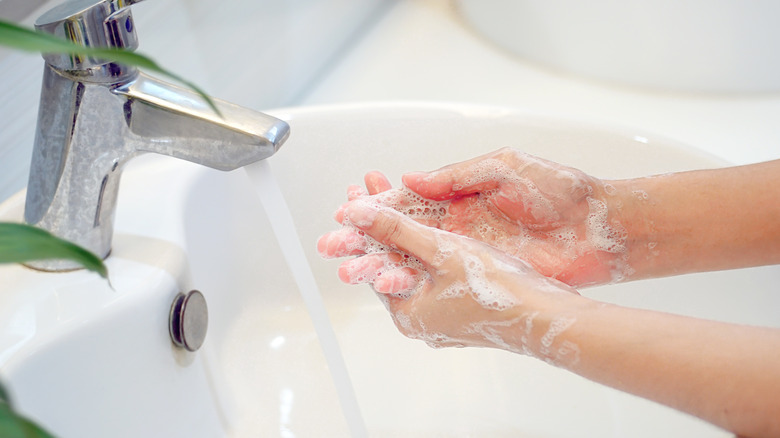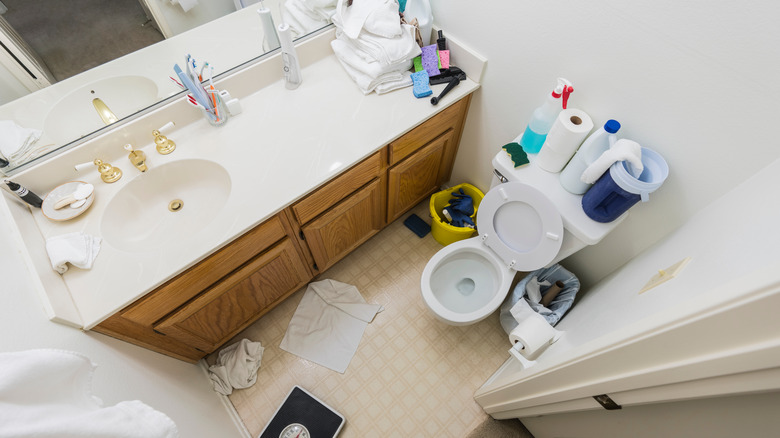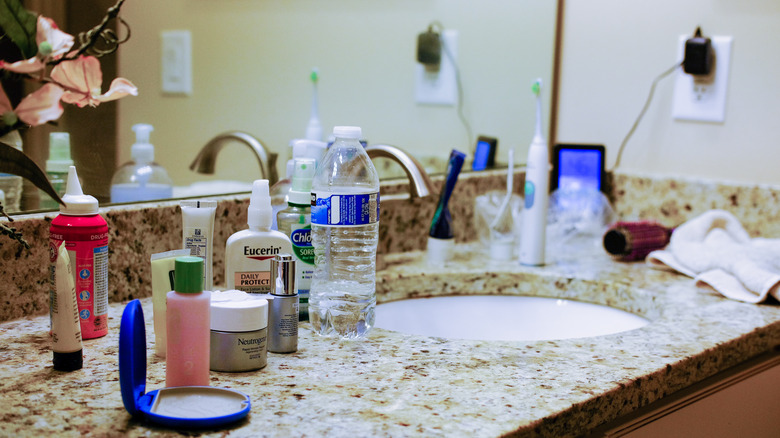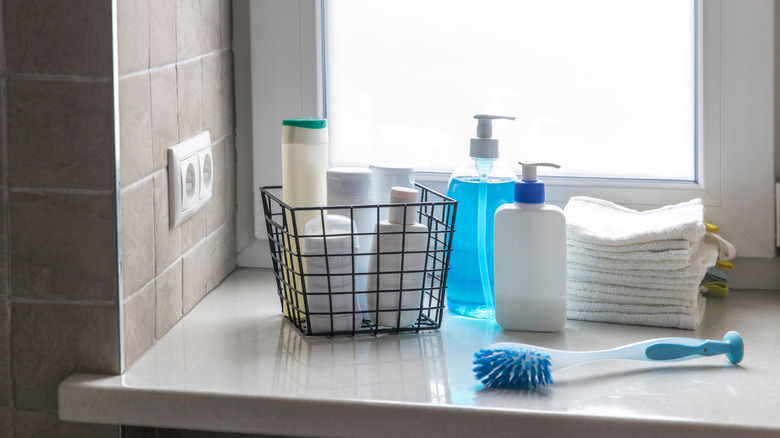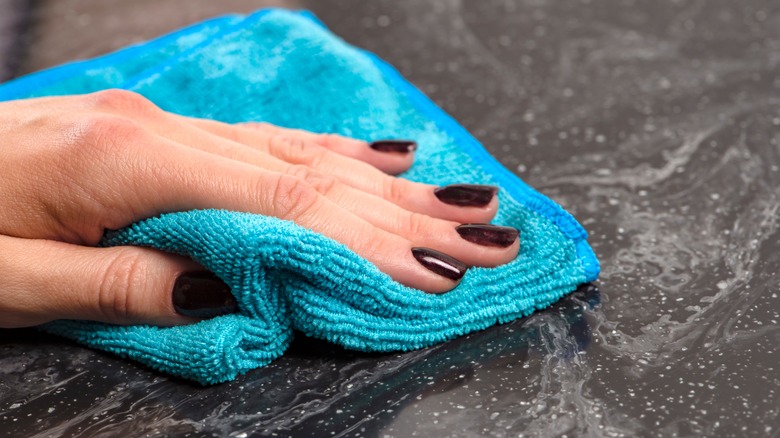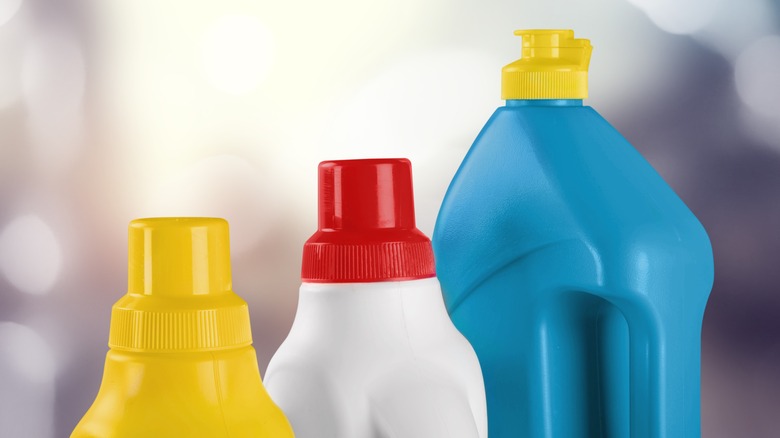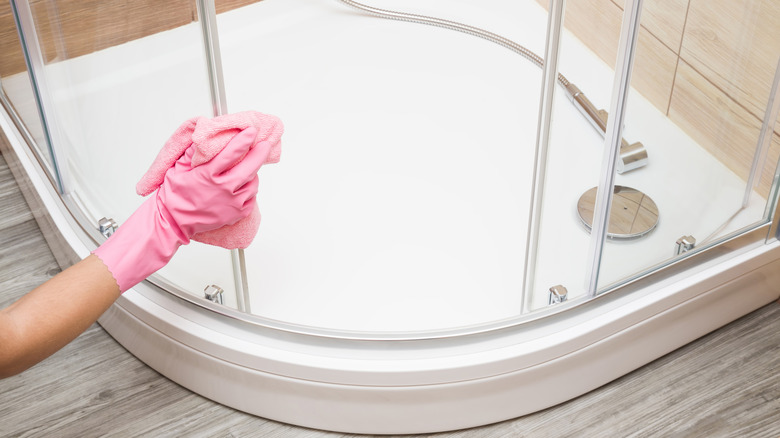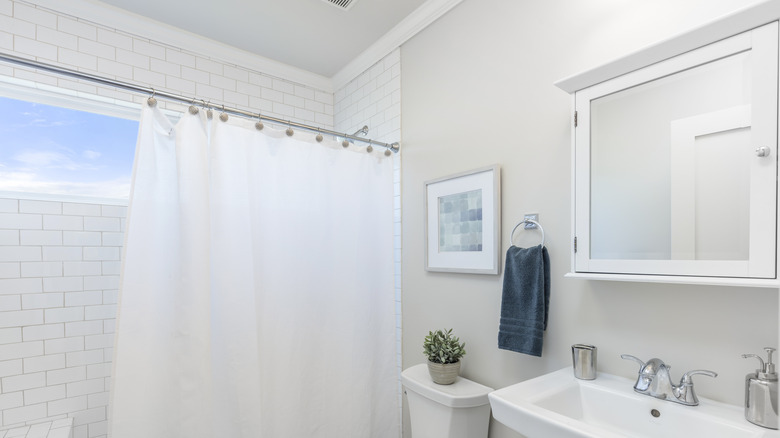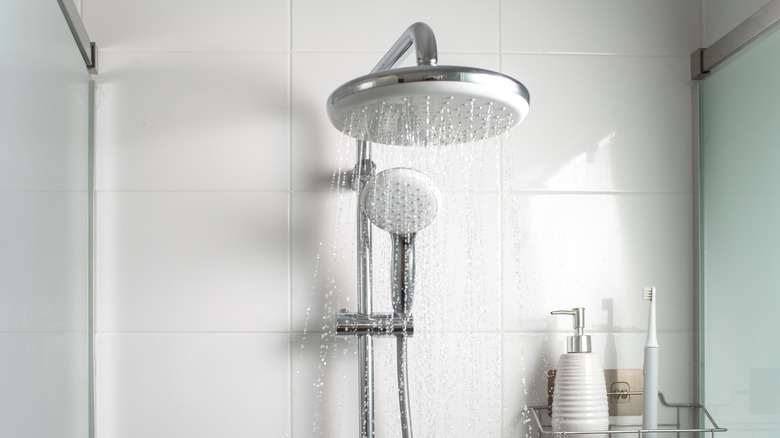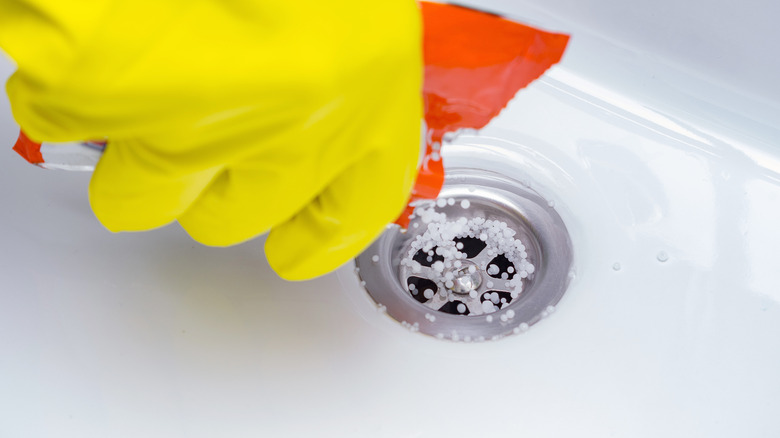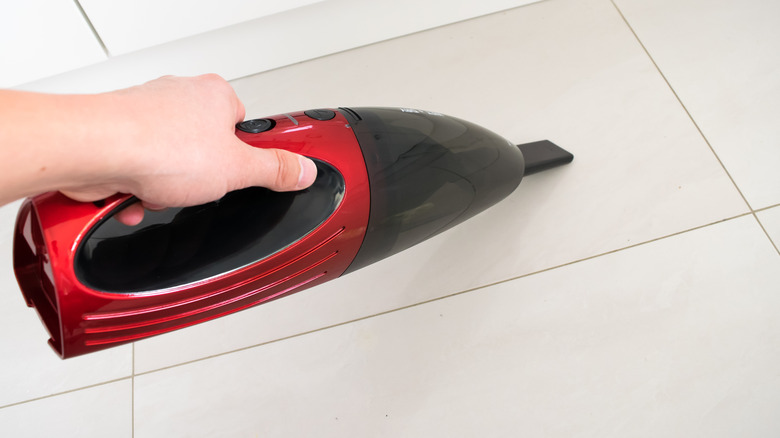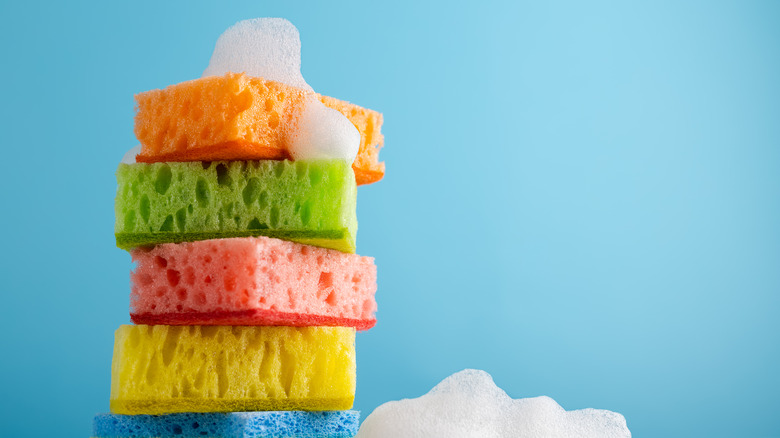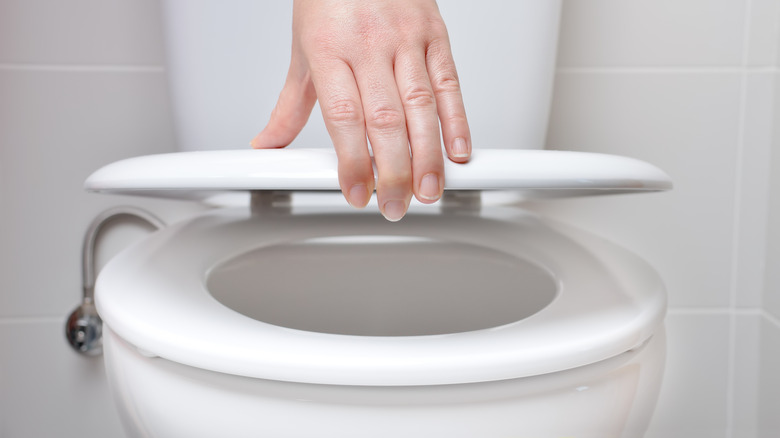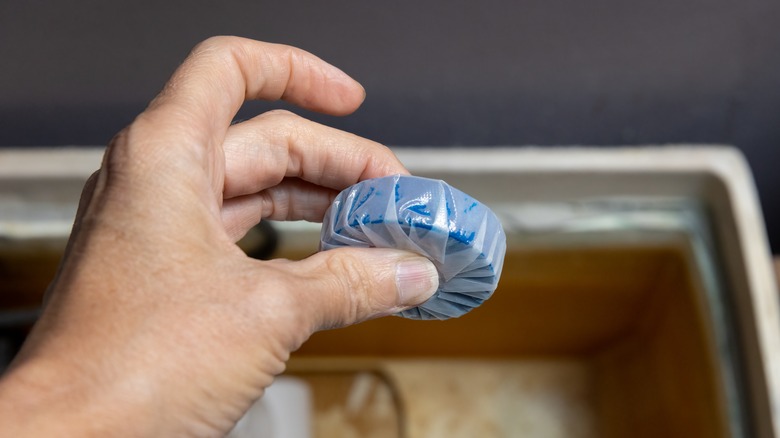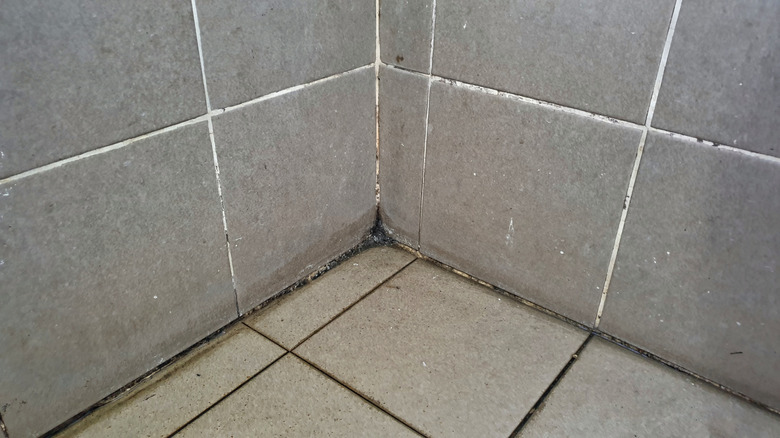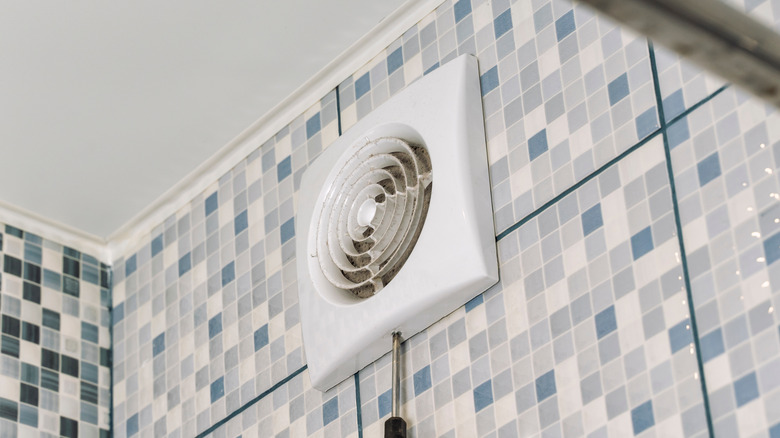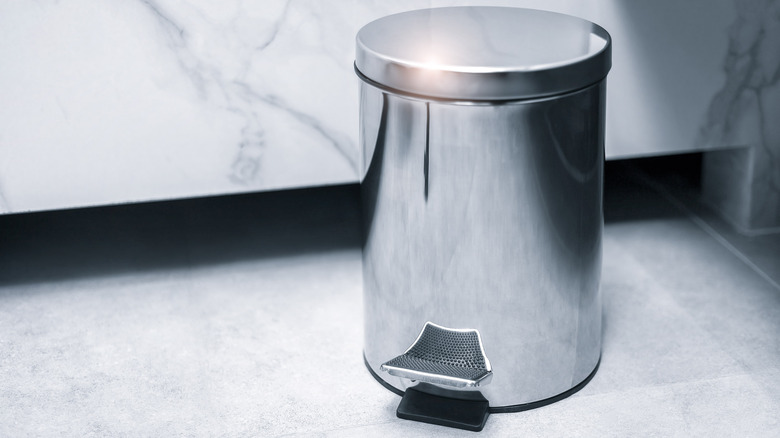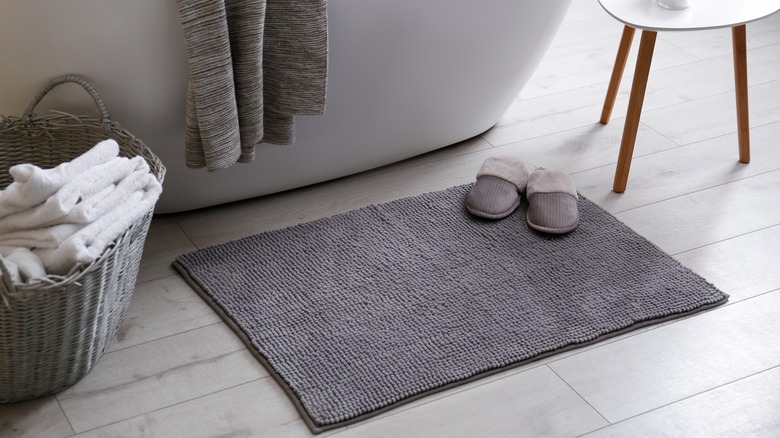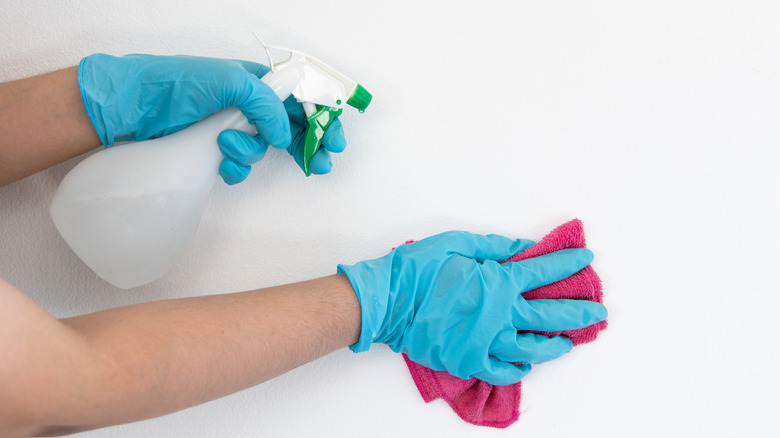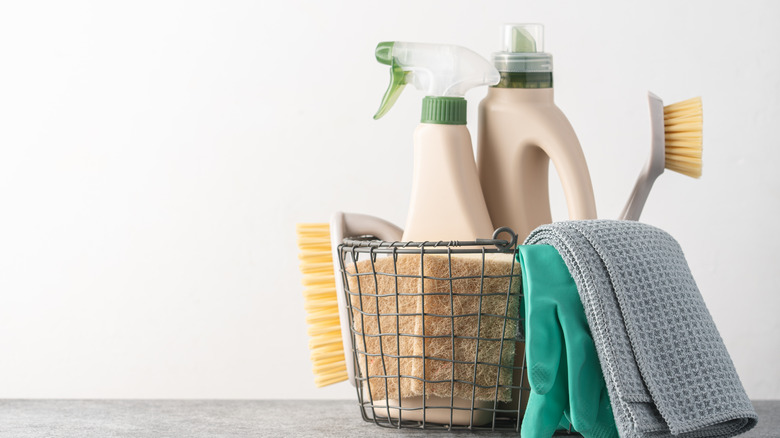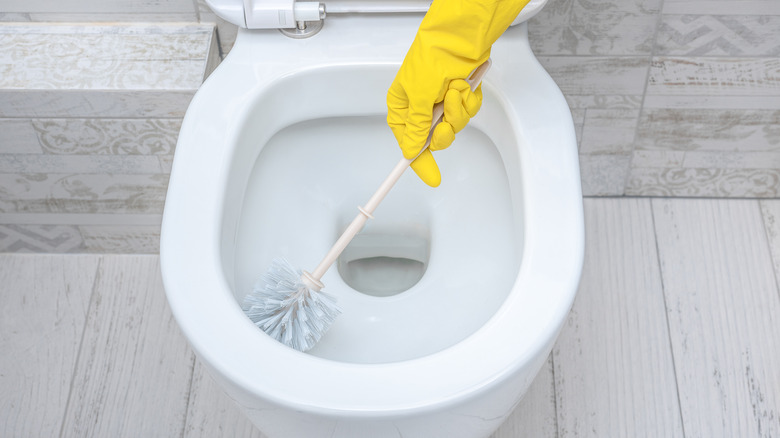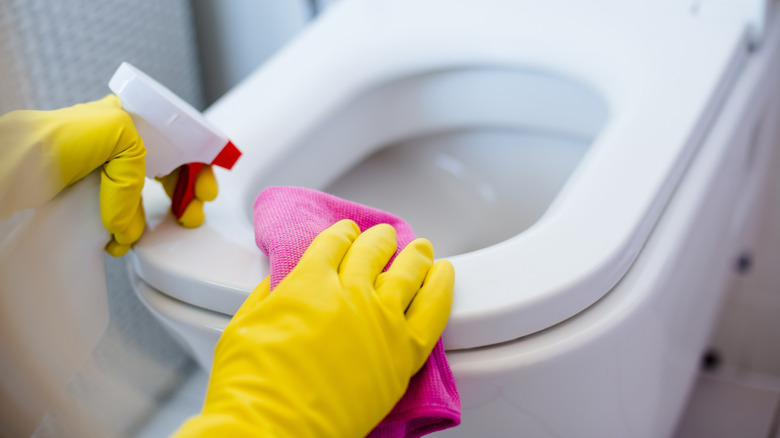22 Bathroom Cleaning Mistakes That May Be Making Your Space Unhygienic
If you didn't know it already, it might make you feel better to know that the kitchen sink with its resident sponge is the germiest spot in the house, simply because it is damp and it harbors food waste, providing a space and a circumstance where bacteria love to thrive, per Hella Home. Unfortunately, having said that, your bathroom, with its toilet bowl, bathmats, trash cans, towels and shower curtain isn't that far behind.
But as Philip M Tierno Jr PhD, director of clinical microbiology and diagnostic immunology at Tisch Hospital, NYU Medical Center points out, germs aren't things we can't live without. "The bulk of germs are harmless to us; they maintain our life and our immunities. But it's important to know where the harmful ones are and how to deal with them so as to prevent unnecessary bouts of illness that waylay you for days," Tierno says, per WebMD. And part of dealing with germs means paying attention to sensible cleaning rules, and avoid cleaning mistakes that could well cause more harm than good.
Not washing your hands
WebMD reminds you that no matter why you're in the bathroom — whether it's using the toilet or cleaning up — always wash your hands when you're done.
Cleaning without a plan
There is a way to clean your bathroom so you don't spread germs around and expose yourself to cross-contamination; Fantastic Cleaners recommends starting from the cleanest spot, and leaving the dirtiest spot for last.
Failing to declutter before you begin
The only way to find all the dust and germ traps around your bathroom is by getting rid of all the bottles and brushes around the sink, bathtub and toilet, so declutter before you begin, per Efficient Cleaning.
Organizing your toiletries
Bathroom cleanups are easier if you start off by being organized. Molly Maid recommends using bathroom accessories like baskets and tubs to keep toiletries and cosmetics from taking over your counter spaces, because the clutter can collect both dust and dust mites.
Forgetting to dust
We might not think of dusting in the bathroom, but Maids a la Mode warns not dusting will create a host of problems because dust can trigger allergies, and it can turn your bathroom into a haven for dust mites.
Mixing cleaning solutions
They may be considered everyday cleaning solutions, but acid, bleach, ammonia, and chlorine are chemicals, and they interact with each other in a way that can cause dangerous gases per the Washington State Department of Health. Always use cleaning products with care and never mix them.
Skipping certain spots
Efficient Cleaning warns that bacteria and germs can collect in places you least expect, and these include light switches, mirrors, cabinets, toilet paper holders, taps and door handles; overlook them at your own risk.
Ignoring your shower curtain liner
Damp shower curtain liners can allow mold and bacteria to grow. Family medicine doctor Jeffrey Brown, DO recommends that you wash your shower curtain with bleach or vinegar, and replace liners every six months to a year, via Cleveland Clinic. It is important to note that bleach and vinegar should never be mixed together. The Missouri Poison Control states that the combination creates chlorine gas, which, per the U.S. Centers for Disease Control and Prevention, can lead to respiratory issues.
Giving your shower head a miss
Research shows dirty showerheads can harbor mycobacteria, which causes lung illnesses. This makes it important to clean showerheads, particularly if they haven't been used for a while, and to install a new one when needed, per Healthline.
Ignoring your drains
Bathroom drains can get clogged if they aren't cleaned regularly, and when this happens, you'll not only get foul smells, but you also create a breeding ground for microbes, per My Gate. Think of cleaning drains as an essential part of home maintenance and as a way of keeping germs at bay.
Forgetting the bathroom floor
Women's Health cites research saying up to 98% of bacteria found in bathrooms either came from our skin, or were brought in from the outside. Cleaning your floor properly once a week will keep your floor's sanitation levels in check.
Using the same sponge to do everything
Using the same sponge to clean every inch of your bathroom, from the shower to your mirrors and the toilet is the best way to make sure cross-contamination happens. HuffPost recommends you keep separate sponges for separate tasks, and clean them often.
Keeping the toilet lid up when you flush
If you're worried about airborne germs, you'll be happy to know that you cut the amount of particles by up to 50% if you just keep the lid on your toilet seat when you flush, says The Microbiology Society.
Relying on tank additives
Wirecutter warns you're not doing your toilet any favors by using drop-in cleaning tablets because these could ultimately damage a toilet's moving parts, and keep it from flushing properly.
Overlooking your bathroom's grouting
Next Day Cleaning has one good reason why you need to keep a regular eye on grout — because it is porous and absorbent, it can trap dirt and breed both bacteria and fungi.
Turning your back on your ventilation
Bathrooms can be full of damp air — and when damp air is trapped, odors develop, and mold and fungi get a chance to thrive. Combat that by keeping bathroom vents clean and letting fresh air in, per Hans Grohe.
Forgetting to disinfect your trash can
Emptying your trash can of its contents doesn't mean it is clean. Cleaning your trash can regularly and thoroughly means disinfecting it, and depriving potentially dangerous germs of a home, per Hella Maid.
Laundering bathmats regularly
Bath mats keep us from slipping and sliding around our bathroom, but because they stay damp they are also the perfect environment for germs and germs to thrive. Rinse suggests washing your bath mat at least once a week — more if you live with other people.
Wiping away a cleaning solution as soon as its applied
Cleaners need time to work, and Cleaning Spaces says some products can only do their job if they're allowed to settle on the surface before they are wiped or washed away.
Not keeping your cleaning tools clean
As The Washington Post points out, cleaning our cleaning tools is a task we overlook but shouldn't. "There's a reason to clean the cleaning tools, and that is so that we're not spreading germs around," says Clean Mama founder Becky Rapinchuk.
Not letting your toilet brush dry
Toilet brushes can become smelly and covered in bacteria if they're still wet when you put them away. For a cleaner brush, rinse it in the toilet water after cleaning and flushing the toilet, and place the handle under the seat with the brush above the bowl to dry.
Not cleaning behind the toilet
When a toilet is flushed, bacteria can spread throughout the bathroom, and neglecting to clean behind your toilet can lead to a build-up of germs. It is recommended to clean the base and all the way behind the toilet with a scrub brush, as mops don't thoroughly reach these areas.
